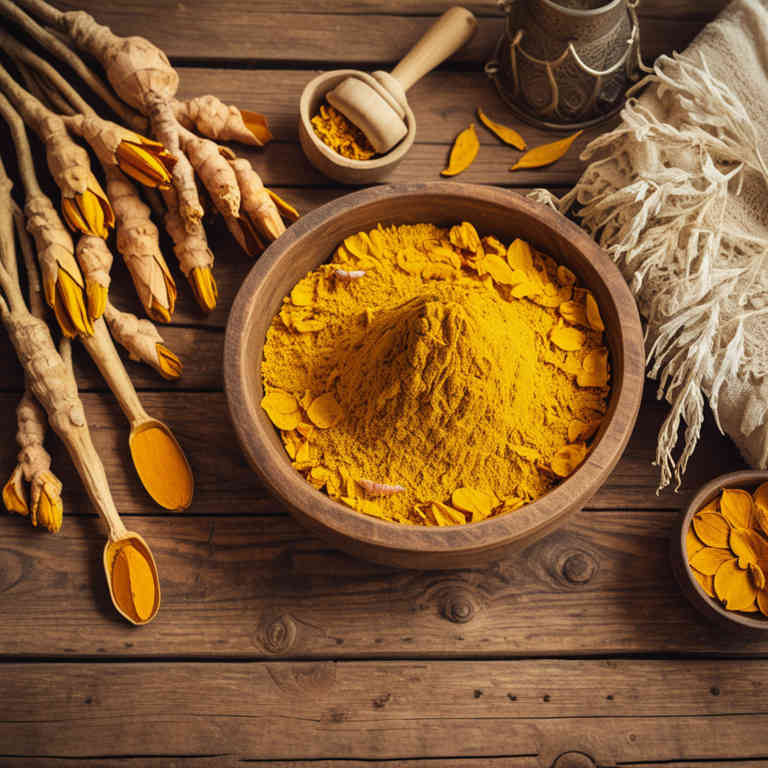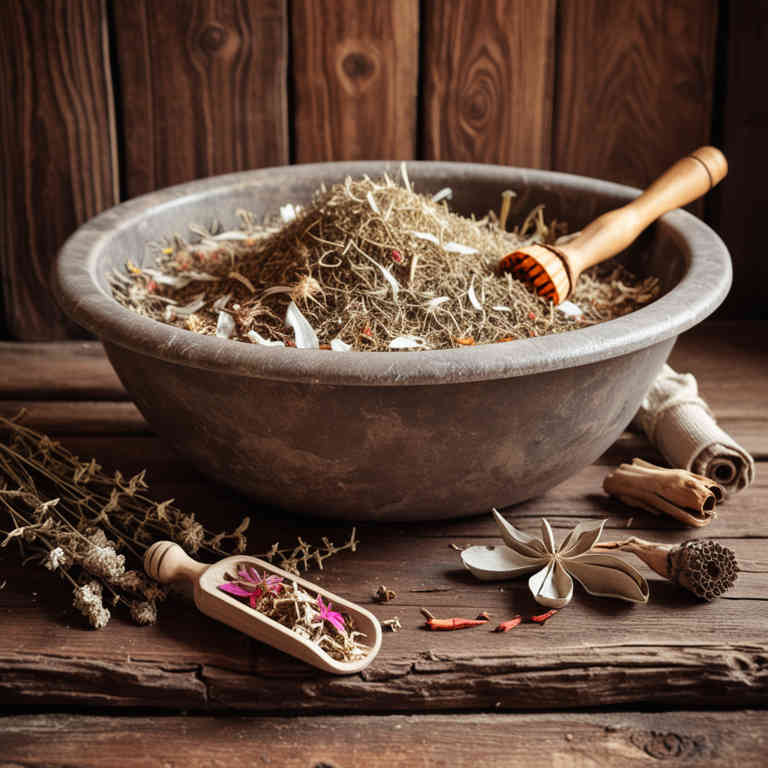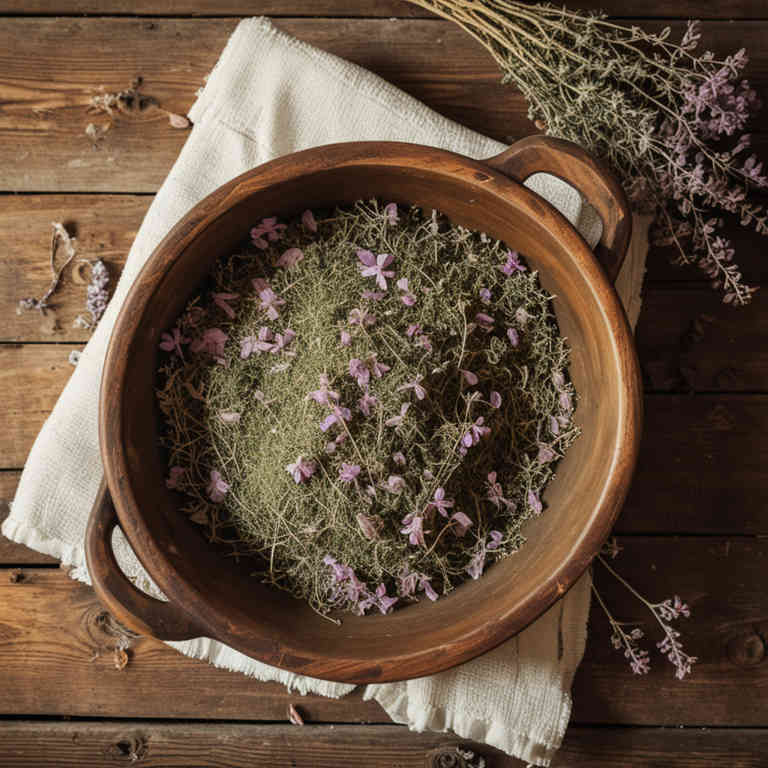10 Best Herbal Baths For Period Cramps

Herbal baths can be a soothing and natural remedy for alleviating period cramps by promoting relaxation and reducing muscle tension.
Certain herbs such as chamomile, lavender, and ginger are known for their anti-inflammatory and calming properties, which can help ease discomfort during menstruation. Soaking in warm water infused with these herbs can increase blood flow and reduce the intensity of cramping sensations. This method is particularly beneficial for those seeking a holistic approach to managing menstrual pain without pharmaceutical interventions.
Overall, herbal baths offer a gentle, accessible way to support menstrual health and enhance overall well-being.
FREE Herb Drying Checklist
How to make sure every batch retains maximum flavor, color, and aroma without the risk of mold or over-drying. Eliminate guesswork and trial-and-error, making herb drying faster, easier, and more efficient every time.
Table of Contents
1. Rosmarinus officinalis

Rosmarinus officinalis, commonly known as rosemary, is a fragrant herb that has been traditionally used for its soothing and therapeutic properties.
When incorporated into herbal baths, rosemary can help alleviate period cramps by promoting relaxation and improving blood circulation. The essential oils from rosemary leaves contain compounds like cineole and camphor, which have anti-inflammatory and analgesic effects. Adding a few drops of rosemary essential oil to warm bath water can provide a calming and comforting experience for those experiencing menstrual discomfort.
However, it is important to dilute the essential oil properly and consult with a healthcare professional before using it, especially for those with sensitive skin or specific health conditions.
2. Urtica dioica

Urtica dioica, commonly known as stinging nettle, has been traditionally used in herbal baths to alleviate period cramps due to its anti-inflammatory and analgesic properties.
When infused into bath water, the compounds in stinging nettle can help reduce uterine inflammation and ease muscle tension, providing natural relief from menstrual discomfort. The warming effect of the bath enhances circulation, promoting the removal of toxins and improving overall comfort during menstruation. To prepare the bath, fresh or dried stinging nettle leaves are steeped in hot water and then added to warm bath water, allowing the beneficial compounds to be absorbed through the skin.
While generally safe, individuals with allergies or skin sensitivities should perform a patch test before using stinging nettle in their bath.
3. Salvia officinalis

Salvia officinalis, commonly known as sage, has been traditionally used in herbal baths to alleviate symptoms of period cramps due to its soothing and anti-inflammatory properties.
When infused into bath water, sage can help relax muscles and ease the tension associated with menstrual discomfort. The aromatic compounds in sage also promote relaxation and may help reduce stress, which is often linked to increased menstrual pain. Herbal baths with sage are a natural and gentle alternative to conventional pain relievers, offering a calming and therapeutic experience.
Regular use of sage-infused baths can provide consistent relief and support overall menstrual wellness.
4. Equisetum arvense

Equisetum arvense, commonly known as field horsetail, has been traditionally used in herbal baths to alleviate the discomfort of period cramps due to its high concentration of silica and anti-inflammatory properties.
When infused into warm water, the bath can help soothe muscle tension and reduce pain by promoting relaxation and improving blood circulation. The astringent nature of horsetail may also help to tone the uterine muscles, offering additional relief during menstruation. Herbal baths with Equisetum arvense are often recommended as a natural and gentle alternative to pharmaceutical treatments for menstrual pain.
However, it is important to consult with a healthcare professional before using this or any herbal remedy, especially for those with pre-existing conditions or who are pregnant.
5. Curcuma longa

Curcuma longa, commonly known as turmeric, has been traditionally used for its anti-inflammatory and pain-relieving properties, making it a popular ingredient in herbal baths for alleviating period cramps.
When dissolved in warm water, curcumin, the active compound in turmeric, can help reduce uterine inflammation and ease the discomfort associated with menstrual cramps. These baths are often combined with other soothing herbs like ginger or lavender to enhance their therapeutic effects. The warmth of the water also helps relax the muscles and improve blood circulation, further supporting relief from cramps.
While generally safe, it is advisable to consult a healthcare provider before using turmeric baths, especially for those with sensitive skin or existing health conditions.
6. Lavandula angustifolia

Lavandula angustifolia, commonly known as English lavender, is often used in herbal baths to alleviate symptoms of period cramps due to its calming and antispasmodic properties.
When infused into warm water, lavender essential oil or dried lavender flowers can help soothe muscle tension and reduce pain associated with menstrual cramps. The aromatic compounds in lavender promote relaxation and may help ease the emotional stress often linked to menstrual discomfort. A lavender-infused bath can also improve blood circulation and reduce inflammation, offering a natural and soothing remedy for those experiencing painful periods.
This gentle, aromatherapy-based approach is a safe and accessible option for many women seeking relief from menstrual discomfort.
7. Zingiber officinale

Zingiber officinale, commonly known as ginger, has been traditionally used for its therapeutic properties, including its ability to alleviate period cramps.
When incorporated into herbal baths, ginger’s warming effect helps to relax uterine muscles and improve blood circulation, reducing pain and discomfort associated with menstruation. To prepare a ginger bath, fresh ginger root can be sliced and boiled in water, then added to a warm tub for a soothing soak. This natural remedy is particularly beneficial for those seeking a non-pharmacological approach to menstrual pain relief.
Regular use of ginger baths may also help reduce menstrual flow and ease other symptoms like bloating and fatigue.
8. Foeniculum vulgare

Foeniculum vulgare, commonly known as fennel, has been traditionally used in herbal baths to help alleviate period cramps due to its mild sedative and antispasmodic properties.
When added to warm water, fennel essential oil or dried fennel seeds can help relax the uterine muscles, reducing the intensity of menstrual pain. The aromatic compounds in fennel also promote a calming effect, which can ease the emotional stress often associated with menstruation. To prepare a fennel bath, simply add a few drops of fennel essential oil or a tablespoon of dried fennel to a warm bath and soak for 15 to 30 minutes.
While fennel baths are generally safe, it is advisable to consult with a healthcare provider before using them, especially for those with sensitive skin or existing medical conditions.
9. Thymus vulgaris

Thymus vulgaris, also known as thyme, is a herb that has been traditionally used for its antispasmodic and warming properties, making it a popular choice for herbal baths aimed at alleviating period cramps.
When infused into bath water, thyme can help relax the muscles of the uterus, reducing the intensity of cramping and promoting a sense of comfort. The aromatic compounds in thyme, such as thymol, may also have a calming effect on the nervous system, further easing the discomfort associated with menstruation. To prepare a thymus vulgaris herbal bath, simply steep a handful of fresh or dried thyme in hot water for several hours, then add the infused water to a warm bath.
Regular use of thyme baths can be a natural and soothing remedy for women experiencing painful menstrual cramps.
10. Achillea millefolium

Achillea millefolium, commonly known as yarrow, has been traditionally used in herbal baths to alleviate the discomfort of period cramps.
When infused into warm water, yarrow's anti-inflammatory and antispasmodic properties can help reduce uterine contractions and ease menstrual pain. The calming scent of yarrow may also promote relaxation and ease stress, which often exacerbates cramping. To prepare a yarrow bath, steep a handful of dried yarrow flowers in boiling water for 15-20 minutes, then add the liquid to a warm bath and soak for 15-20 minutes.
While generally safe, individuals with allergies to plants in the Asteraceae family should exercise caution and consult a healthcare provider before use.